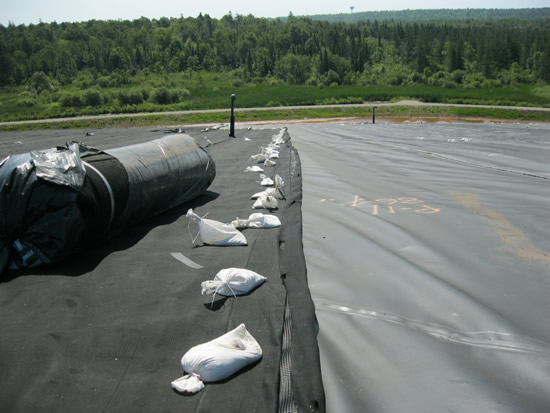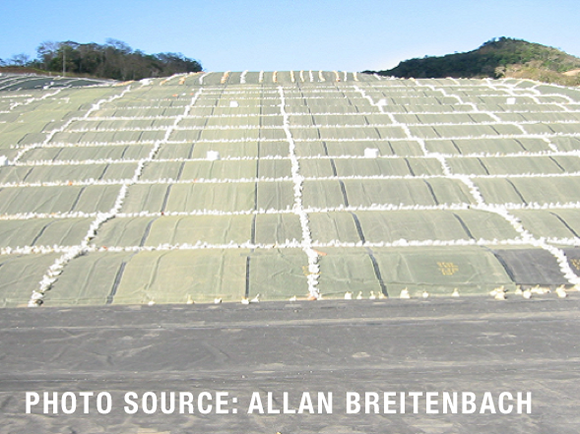

The Geosynthetic Institute opened the year by increasing the number of webinars it offers in the calendar year. In April, this includes two very big topics: landfill expansion over existing landfills and geosynthetics in heap leach mining.
The webinars will be held 11:30 am – 1:00 pm EST on April 12 (Landfill Exapnsion) and April 26 (Heap Leach Mining). Each carries 1.5 PDHs, provided successful completion of a 10-question multiple choice test to follow the sessions.
Register online via GSI
LATERAL & VERTICAL EXPANSIONS OVER OLD AND EXISTING LANDFILLS
The April 12 session on “Lateral and Vertical Expansions Over Old and Existing Landfills” will begin by describing the current state of landfills, with respect to the thousands of old “dumps” and currently operating/aging landfills; followed by discussion of lateral and vertical expansions, how to properly achieve them, etc. In lateral expansions, orientation, cross sections, foundation settlement, liner system behavior, geosynthetic selection and design details (including translational stability) are explained. In vertical expansions, general conditions, cross sections, estimating total settlement, estimating and designing against differential settlement and design details (including accelerated decomposition of the waste) are explained. Lastly, a section on post-closure landfill uses is included.
Dr. Robert M. Koerner (Professor Emeritus of Civil Engineering at Drexel University and Director Emeritus of the Geosynthetic Institute) will lead the session.
Download a webinar description (PDF)
GEOSYNTHETIC APPLICATIONS IN HEAP LEACH MINING
In writing about the April 26 session, GSI notes that “the chemical extraction of precious metals from low grade ore and tailings has been ongoing since the 1950s. Gold, silver, and copper are the general targets, wherein heaps of the ore are leached with cyanide or sulfuric acid which gravitationally flows to the base with its dissolved metals and is then collected by a drainage system. Of course, a geomembrane must be beneath or the pregnant leach solution will escape. (Incidentally, it is estimated that almost 40% of all geomembranes are being used for this application). The metal is then recovered from the leachate in an on-site processing plant. The barren liquid is then revitalized and sent to the top of the heap for recirculation until the process is no longer economic. In this webinar the various heap configurations and operations will be described. The major design issues of geomembrane selection, leach drainage pads, slope and heap stability, liquefaction potential and pond liner decisions are described in as much detail as time permits. Reflections on the technology as well as summary, conclusions and recommendations are offered.”
It’s a tall order to address but one of the most actively important geomembrane applications—as well as one in which geomembranes provide significant ROI benefits to mine owners. (Leached metal is not lost in seepage.)
Webinar participants will learn the concept, technique and idiosyncrasies of heap leach mining as is currently practiced worldwide. Geosynthetics involved in properly designing these systems include: geomembranes, geonets, geotextiles, geosynthetic clay liners, and geopipe. Five critical design issues will be emphasized. Among them are heap and slope stability (there are many stability failures) issues and procedures. Participants will learn about the economics of these massive operations vis-à-vis the environmental concerns which must be properly addressed.
Download a webinar description (PDF)
**
Learn more about the Geosynthetic Institute’s work at www.geosynthetic-institute.org.
Register for the webinars online











